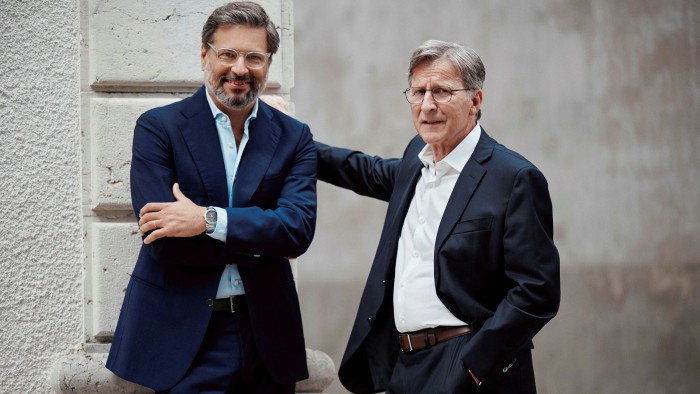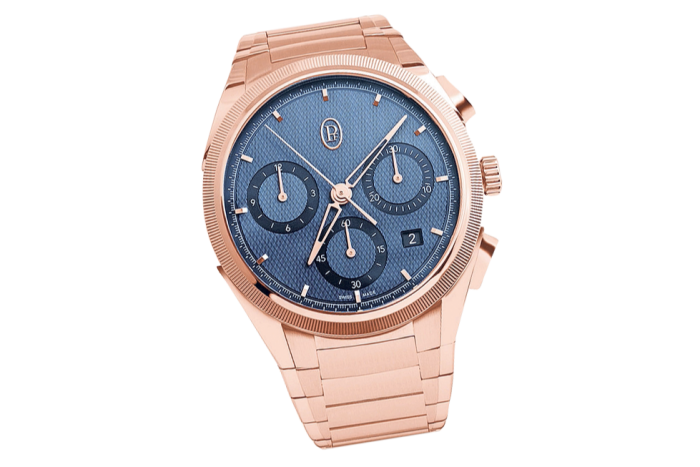Parmigiani’s Guido Terreni: luxury has become more mainstream

Roula Khalaf, Editor of the FT, selects her favourite stories in this weekly newsletter.
When Guido Terreni took up his post as chief executive of the high-end Swiss watch brand Parmigiani Fleurier in January, he knew he had a battle on his hands. “It was not a secret — it was not a company of wealth,” he says of his new charge.
While Parmigiani does not publish its annual results, research by Morgan Stanley shows that, last year, it sold about 1,200 watches, generating estimated turnover of SFr14m ($15.35m) and retail sales of SFr24m — roughly half 2019’s performance.
Even allowing for the effects of the pandemic, the figures are startling. According to Oliver Müller, founder of the Swiss watch consultancy firm LuxeConsult and co-author of the Morgan Stanley report, Parmigiani is still suffering from historic decisions taken by previous administrations.
“Davide Traxler [Terreni’s predecessor] was recruited to clean inventories, which were at levels that could justify sales of at least 10,000 pieces a year,” he says. “But the problem is that Parmigiani never went above 3,000 to 4,000 units a year, and that sales never went up further than SFr30m.” Traxler stepped down in February after two-and-a-half years as chief executive.
According to Müller, the Basel-based Sandoz Family Foundation investment company — which owns Parmigiani — recently considered selling the watch brand and its sister manufacturing companies. Among them is Vaucher Fleurier, a high-end parts and movement manufacturer that Müller says supplies other high-end Swiss brands. But the sale, says Müller, was blocked by family-run French luxury house Hermès, which has a 25 per cent stake in Vaucher Fleurier. Terreni declined to comment.
Terreni arrived at Parmigiani on the back of more than a decade of success as head of Bulgari’s watchmaking division. During his tenure, Bulgari emerged as one of the most important players in the luxury watch business, taking on established brands with a collection of highly distinctive models, a number of which set world records for thinness, widely recognised as one of the keystones of elite mechanical watchmaking.
The 52-year-old says he wanted a change. “Having done the whole assortment [of Bulgari watches] and industrial strategy, I wanted a new challenge,” he says. Bulgari is part of LVMH’s watch division, which includes Tag Heuer and Hublot and, in 2020, reported revenues of €3.4bn. According to the Morgan Stanley estimates, Bulgari’s watch division accounted for SFr261m of that.
Terreni says starting his job in the depths of the Covid pandemic was a blessing and a curse. “It was difficult,” he says. “But it was also an opportunity to be introspective and understand who we want to be. That is the big question the brand has to ask.”
Parmigiani was founded in 1996 by the revered watch and clock restorer Michel Parmigiani. “I was looking for a serious brand with a lot of knowhow,” says Terreni. “Parmigiani is a niche brand, clearly less important in terms of size [than Bulgari]. But size doesn’t matter so much. It’s more about what you can do with a brand. The potential with Parmigiani Fleurier is interesting because the prestige of the brand is extremely high. On average, it operates between $25,000 and $200,000 retail. Prestige is the most difficult lever to shift in brand perception.”
Terreni says one of his first tasks was to define the brand’s client. “You won’t come to Parmigiani [for] your first watch,” he says. “It’s a brand which is known by few. Our client is an insider, not ostentatious and they’re not really buying for social recognition. When you are niche you don’t have to fall into the trap of trying to please everyone.”
If there is a platform to build on, Terreni believes it is in the growing power of niche brands. “In my 21 years of luxury, I have never seen a moment like this,” he says. “Luxury is becoming bigger and bigger, and the bigger it becomes the more it becomes mainstream. This trend has given birth to a counter trend of niche brands, of brands that are dedicated to clients that want to set themselves apart from mainstream homologation.”
The first indication of his influence over the company’s product development strategy is the Tonda PF, a family of seven sports watches with guilloché dials, integrated bracelets and the company’s own high-end movements. Terreni says they were introduced to mark Parmigiani’s 25th anniversary and are defined by what he calls “sartorial craft”. They pick up on the company’s existing Tonda line that Terreni says is “the most important in our sales.”

He oversaw the creative process. “The company is very knowledgeable technically but can improve a lot in the aesthetics of a timepiece,” he says. “We have an idea of servicing a younger client. But we’re using colours that aren’t fashionable; they’re discreet. We want people to understand how luxury can be refined and not ostentatious.”
Part of that, he says, was creating a “PF” logo graphic in place of the full dial name — which, as some have argued, also distances the brand from confusions with an Italian cheese.
Focusing the company’s attentions on a sportier watch was, he says, a reflection of a change in luxury consumer appetites.
“The world is going towards less formality, so a formal watch will have less occasion to be worn than in the past,” he says. “But that doesn’t mean we have to be less elegant.”
Terreni says the Tonda PF will be “the backbone of the assortment” and that his plan is to concentrate Parmigiani’s collection around this and two other lines, the Toric and Kalpa. “We . . . need to streamline our product names,” he says.
Prices of the new Tonda PF start at £18,250 for a steel automatic with a platinum bezel, a significant increase over the current Tonda models. The outgoing Tonda 1950 Automatic is available for £8,400.
“We’re increasing the average price [of our watches],” says Terreni. “The ambition is to grow volumes, but not to 10 or 20,000 in the short term,” he adds. “You have to do it gradually.”
However, Müller is not convinced the price increase will work. “The new Tonda PF is very nicely done,” he says. “But will the markets understand that all of a sudden, the same watch, or at least the same movement, costs double the price?”
Terreni says Parmigiani is already turning the corner. “We are significantly better than industry growth in 2021.” He urges patience, though. “You cannot think you’re going to turn a brand around in a couple of months, and you can’t change everything in one year.”
Comments